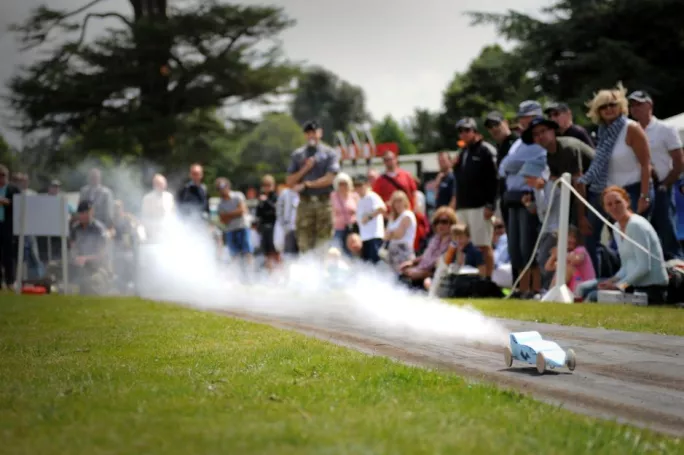How supersonic technology is bringing STEM subjects to life
Major Oli Morgan of the Royal Electrical and Mechanical Engineers writes about an outreach project that is committed to getting students more engaged in science, technology, engineering and maths (Stem):
“I get it - I finally get the equation”. The words of one of the 300 children invited to take part in the Bloodhound rocket challenge at Goodwood Festival of Speed last week.
Mission accomplished. In the space of two hours, the challenge has successfully brought aerodynamics, rocket science and speed calculation to life for this 12-year-old girl ? a student who may have already been led away from pursuing a Stem career by social stigma about what girls should and should not excel at.
Taking inspiration from the Bloodhound SSC ? a jet- and rocket-powered car designed to travel faster than the speed of sound ? the rocket challenge asks groups of schoolchildren to craft wheeled vehicles out of styrofoam, before putting their creations to the test by attaching a small rocket motor and launching the cars down a 50m track at speeds of around 120mph.
During the challenge, a rocket built by a team of three girls from Twynham School in Dorset goes so fast that it bursts into flames and sets light to the soft barrier at the end of the track. Far from being upset about the demise of their rocket, the girls are excited, demanding to know exactly what speed it was doing.
To answer their questions, army reservist craftsman Liz Brown, who has been marking run times on the cars, leads an impromptu lesson on speed calculation. She draws the speed=distance/time triangle as the girls pull out their smartphones to put the equation into practice.
The rocket challenge coincides with the army’s announcement of their continued support for Bloodhound’s education programme. One-hundred soldiers have already been trained to become part of a volunteer force of educational ambassadors who will take cutting-edge speed technology into the classroom.
Soldiers from the Royal Electrical and Mechanical Engineers have been visiting schools across the country in an effort to offer every child a lesson on Bloodhound by 2018. So far 40,000 children have been taught about the supersonic car.
Outreach projects such as this challenge children’s perception of what is achievable when it comes to science and engineering.
This initiative reaffirms the army’s support of the Bloodhound project, which already has a small team of military technicians seconded to the engineering team under a commercial arrangement to help to build the 1,000mph car.
Major Oli Morgan is an aircraft engineering officer in the Royal Electrical and Mechanical Engineers and team leader for the army’s involvement in the Bloodhound SSC project. He is also responsible for managing the army’s Educational Ambassador Project
Keep reading for just £1 per month
You've reached your limit of free articles this month. Subscribe for £1 per month for three months and get:
- Unlimited access to all Tes magazine content
- Exclusive subscriber-only stories
- Award-winning email newsletters




